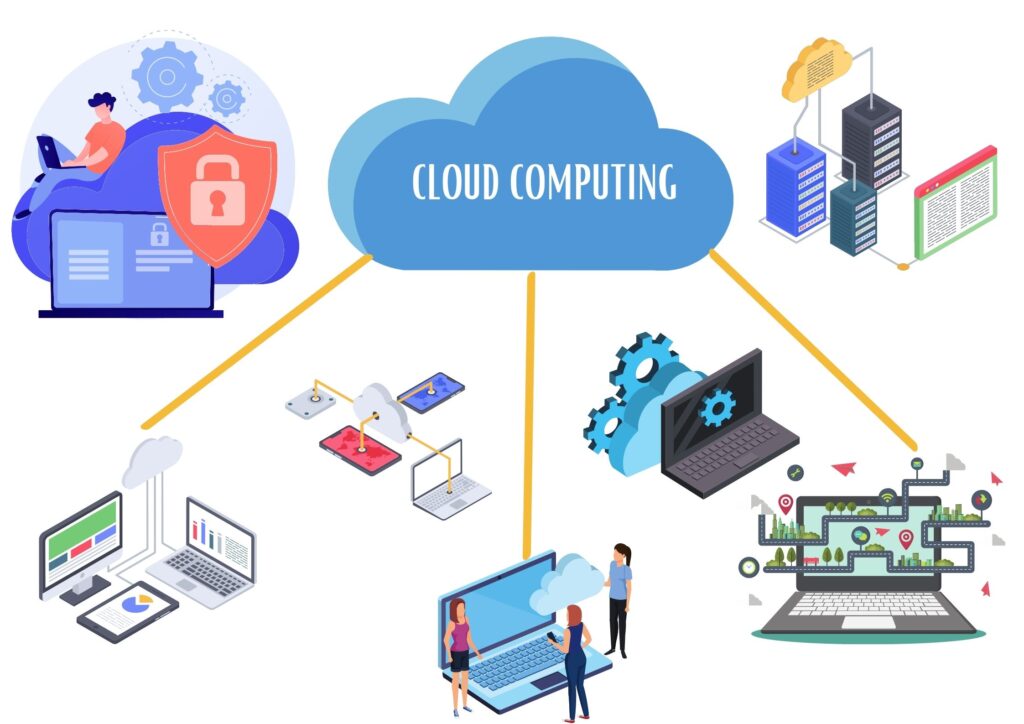Understanding Cloud Computing: A Beginner’s Guide for End Users
Introduction:

Cloud computing has become a buzzword in recent years, and for a good reason. It is transforming the way we use technology and interact with digital services. Whether you are a small business owner or an individual looking to store your files on the cloud, understanding cloud computing is crucial. In this beginner’s guide, we will explore what cloud computing is, why it is important, the types of cloud computing services available, and the benefits for end-users.
What is cloud computing?
Cloud computing refers to the delivery of on-demand computing services, such as servers, storage, and software, over the internet. Instead of hosting applications or storing data on a local computer or server, cloud computing allows you to access these resources remotely. This means you can access your data or use software applications from anywhere in the world, as long as you have an internet connection.
Why is cloud computing important?
Cloud computing has revolutionized the way businesses and individuals access and use technology. Instead of investing in costly hardware and software, cloud computing offers a cost-effective and scalable solution. It enables businesses to access the latest technology without having to worry about the maintenance and upkeep of hardware and software. Moreover, cloud computing offers a more secure and reliable way to store data and run applications, ensuring that your data is always safe and accessible.
Types of cloud computing services:
There are three types of cloud computing services, each offering different levels of control, flexibility, and management:
- Software as a Service (SaaS): SaaS is a cloud computing model that allows users to access software applications over the internet. This means that you don’t have to download or install software on your computer or device. Instead, you can use software applications through a web browser or mobile app.
- Platform as a Service (PaaS): PaaS is a cloud computing model that provides a platform for developing and deploying applications. PaaS offers a complete infrastructure for application development, including operating systems, databases, and web servers.
- Infrastructure as a Service (IaaS): IaaS is a cloud computing model that provides virtualized computing resources over the internet. This includes servers, storage, and networking. With IaaS, users can deploy and manage their applications and data without having to invest in and maintain costly hardware.
Benefits of cloud computing for end-users:

Cloud computing offers several benefits for end-users, including:
- Cost savings: Cloud computing eliminates the need for costly hardware and software investments. This means that businesses can scale their technology needs up or down as needed, without having to worry about the financial implications.
- Scalability and flexibility: Cloud computing offers a scalable and flexible solution that allows businesses to adapt to changing market conditions and technology needs. It also provides users with the ability to access their data and applications from anywhere in the world.
- Security and reliability: Cloud computing providers offer secure and reliable storage solutions, ensuring that your data is always safe and accessible. Moreover, they offer advanced security features, such as data encryption and multi-factor authentication, to protect against cyber threats.
Understanding the Basics of Cloud Computing:
To better understand cloud computing, it is important to familiarize yourself with its characteristics, deployment models, and service models.
Characteristics of cloud computing:
Cloud computing is characterized by the following features:
- On-demand self-service: Users can access computing resources as needed, without having to go through a service provider.
- Broad network access: Cloud computing services are accessible from anywhere in the world, as long as you have an internet connection.
- Resource pooling: Cloud computing providers pool computing resources to meet the demands of multiple users.
- Rapid elasticity: Cloud computing providers can quickly scale computing resources up or down as needed.
- Measured service: Cloud computing providers offer a pay-as-you-go model, allowing users to only
